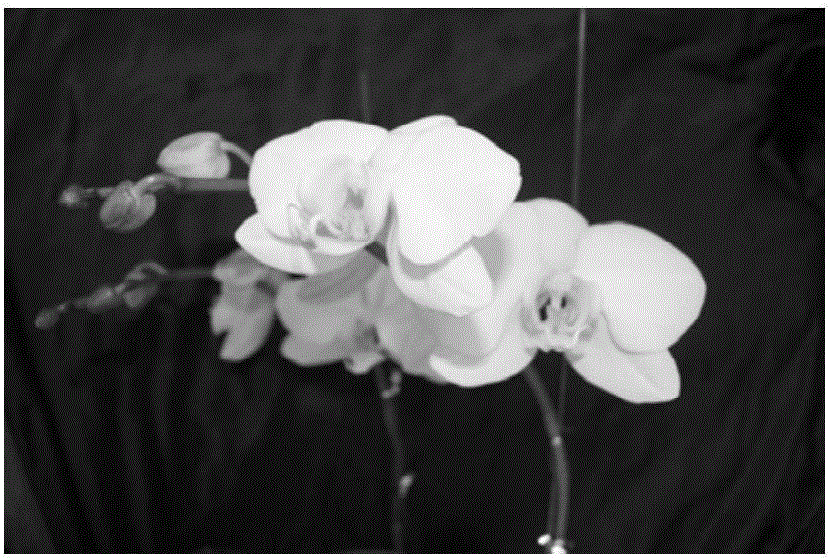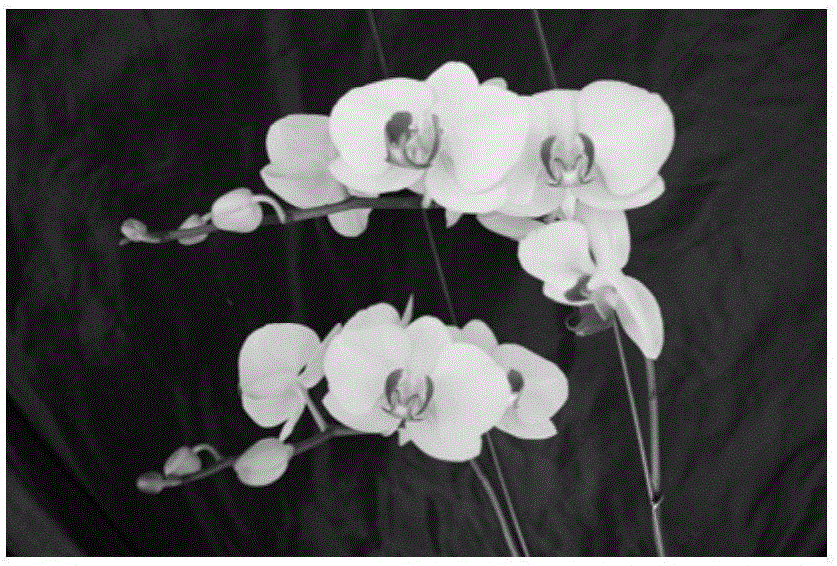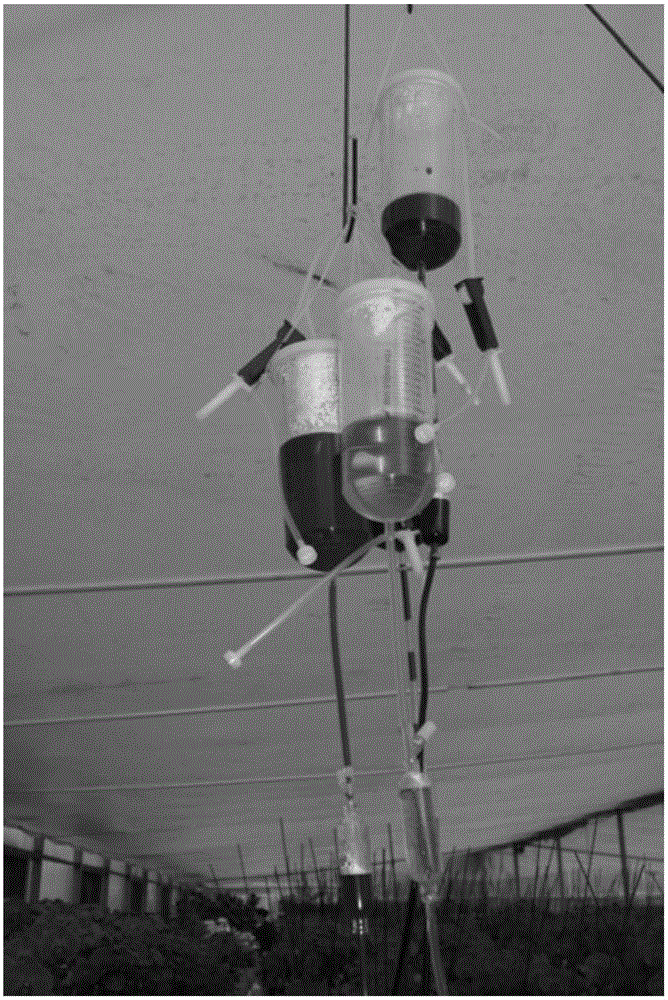Methods for dyeing and culturing butterfly orchids
A dyeing method, the technique of Phalaenopsis, is applied in the field of Phalaenopsis dyeing, which can solve the problems of shortening the ornamental life of Phalaenopsis cut flowers, damaging the pedicel area, and long cycle, so as to increase the artistic atmosphere and ornamental value, and achieve symmetrical and uniform coloring, complete and uninterrupted. destroyed effect
- Summary
- Abstract
- Description
- Claims
- Application Information
AI Technical Summary
Problems solved by technology
Method used
Image
Examples
Embodiment 1
[0072]Select the red Phalaenopsis variety 'Red Swan' (Doritaenopsis 'Red swan'), choose to be planted in pots with a diameter of 8.5cm, and grow healthy and neat seedlings for 12 months. The date of flower urging is 7 months before the target flowering period, and the day / night temperature is controlled at 25-27℃ / 16-18℃ for flower urging treatment. After the pedicel is pulled out, the day and night temperature is controlled at 26-28°C / 17-19°C, and the pedicel is fixed with plastic-coated iron wire and clips, and the position of the seedling remains unchanged to avoid distortion of the inflorescence. Select the plants with half of the inflorescences open for dyeing. Select Tianfuyuan brand edible dyes such as bright blue, sunset yellow, grape purple, fruit green, etc., and prepare a dye solution for dyeing Phalaenopsis orchids at a concentration of 10g / L. Select No. 5 needle tube (1ml), suck the prepared dye solution into the needle tube, and inject at the base of the Phalaeno...
Embodiment 2
[0075] Select the white-flowered variety 'V3' (Doritaenopsis 'V3'), and select healthy and neat seedlings planted in pots with a diameter of at least 11.5 cm and a growth period of at least 18 months. The date of flower urging is 7 months before the target flowering period, and the day / night temperature is controlled at 25-27℃ / 16-18℃ for flower urging treatment. After the pedicel is pulled out, the day and night temperature is controlled at 26-28°C / 17-19°C, and the pedicel is fixed with plastic-coated iron wire and clips, and the position of the seedling remains unchanged to avoid distortion of the inflorescence. Select the plants with the first flower in bud and slightly open for dyeing. Choose lion head brand food dyes bright blue, sunset yellow, grape purple, fruit green, etc., and prepare a Phalaenopsis orchid dye solution with a concentration of 10g / L. Select a hanging bottle for plants (needle No. 5.5), pour the prepared dye into the hanging bottle, squeeze the middle d...
Embodiment 3
[0079] It was carried out in substantially the same manner as in Example 2, except that the same amount of dye solution was infused by syringe injection.
[0080] It was found that the syringe injection method severely injured the flower stalks (see Figure 9 ), most of the tissue around the injection part of the pedicel is necrotic, if the wax seal is not done after the injection, it is easy to get bacterial infection, which is harmful to the development of the inflorescence, and the flowering period is greatly shortened. The vial injection method causes minimal damage to the pedicel (see Figure 10 ), and even do not need to do post-injection wax sealing and other treatments, basically does not affect the growth and development of plants, and has no effect on the flowering period.
PUM
 Login to View More
Login to View More Abstract
Description
Claims
Application Information
 Login to View More
Login to View More - R&D
- Intellectual Property
- Life Sciences
- Materials
- Tech Scout
- Unparalleled Data Quality
- Higher Quality Content
- 60% Fewer Hallucinations
Browse by: Latest US Patents, China's latest patents, Technical Efficacy Thesaurus, Application Domain, Technology Topic, Popular Technical Reports.
© 2025 PatSnap. All rights reserved.Legal|Privacy policy|Modern Slavery Act Transparency Statement|Sitemap|About US| Contact US: help@patsnap.com



